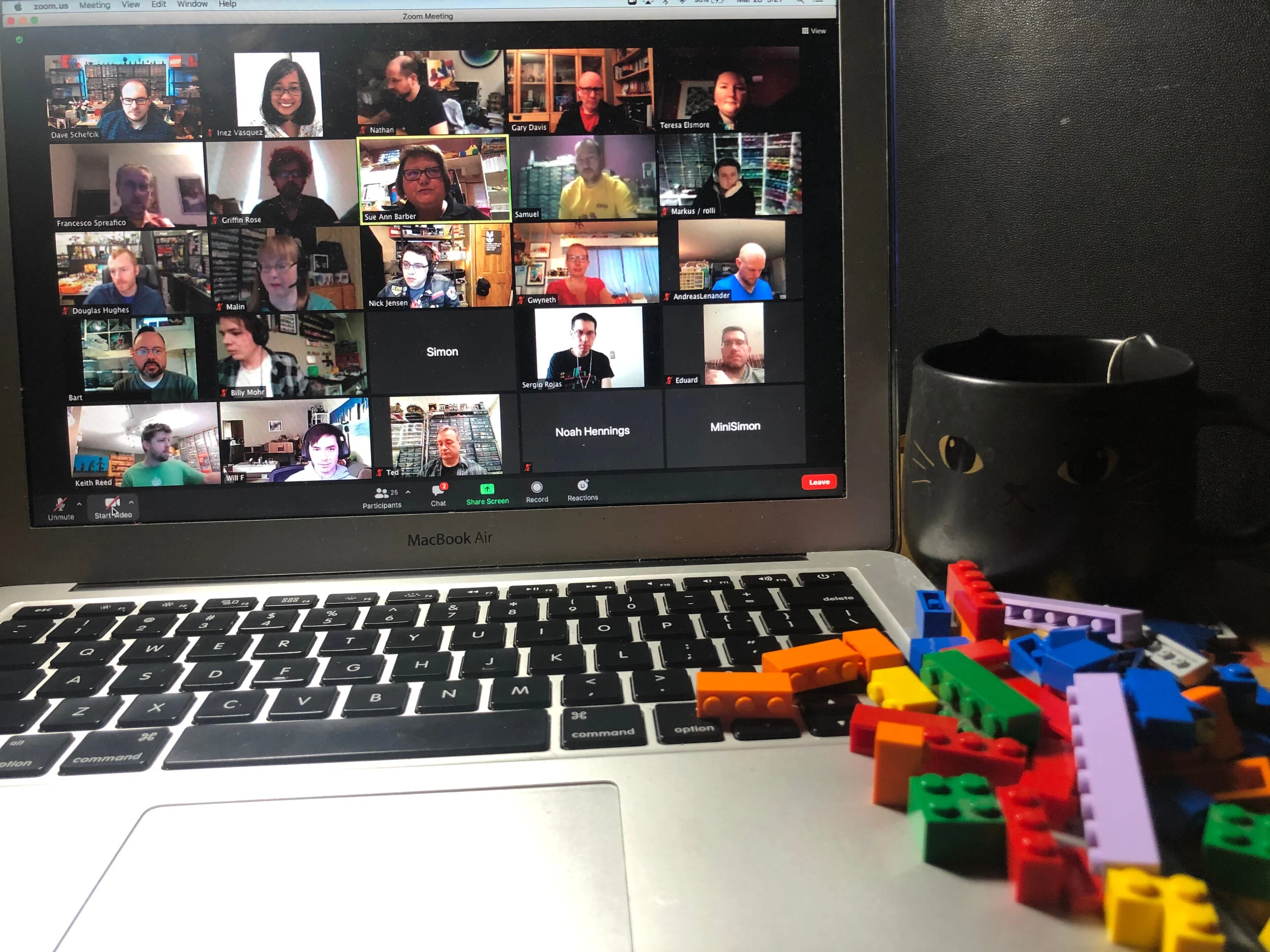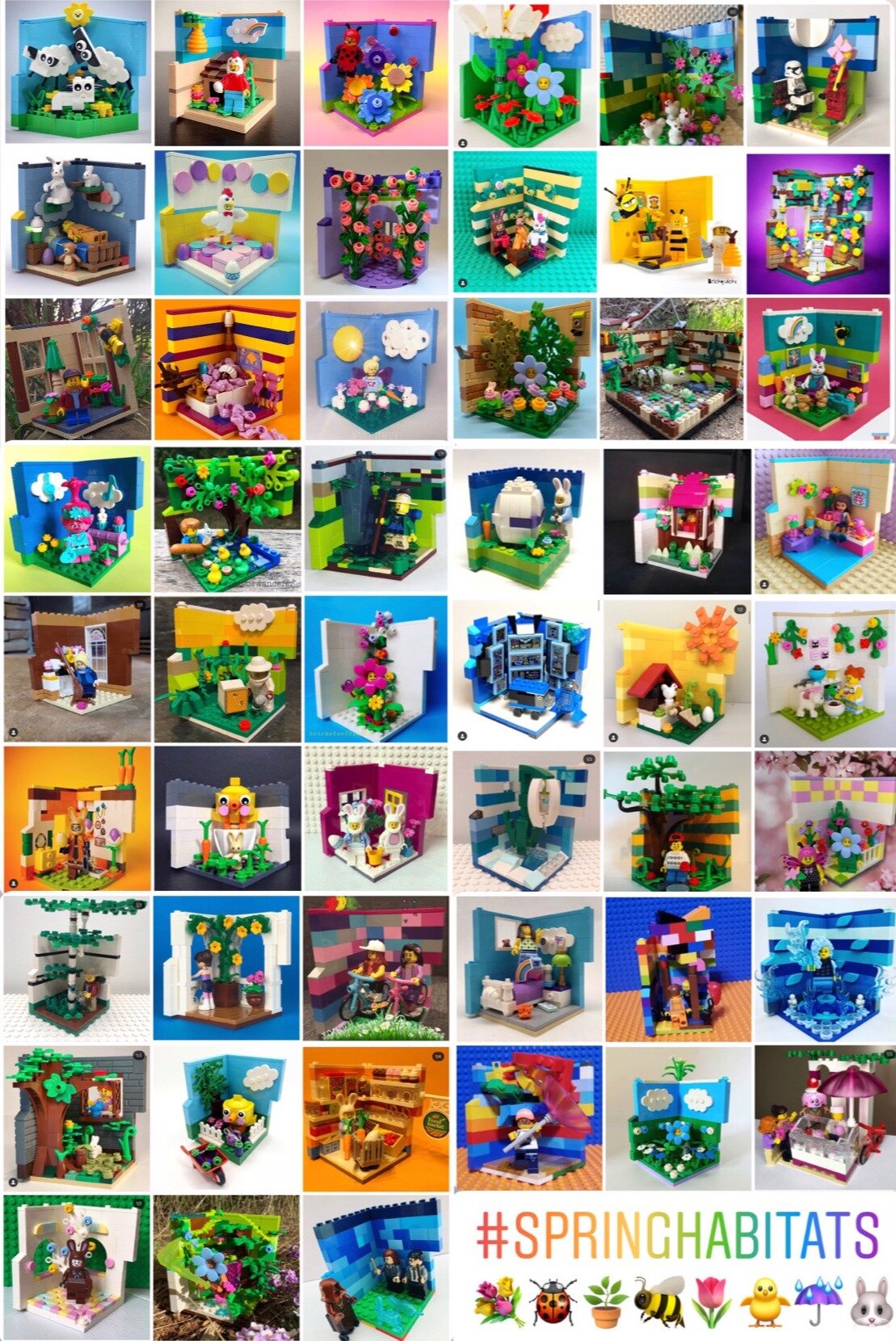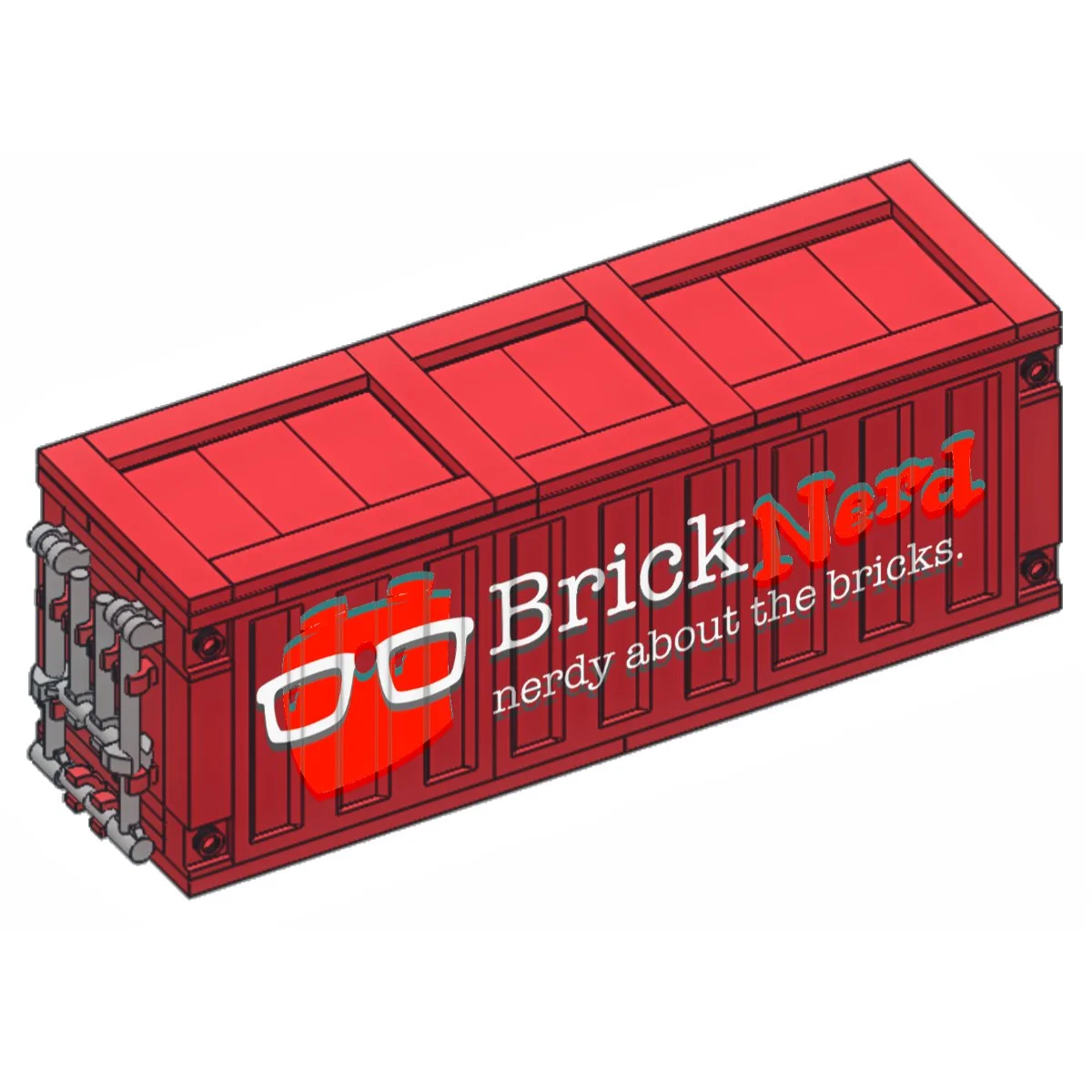LEGO Community in the Time of COVID
/Community plays a big role in the life of an AFOL. Conventions, meet-ups, and collaborative builds bring us together and provide an avenue to further enjoy LEGO as a hobby. But like everybody else, AFOLs have had to adjust to living and building with the COVID-19 pandemic.
Everyone across five continents during our “Nerd Out with BrickNerd” team call.
Hello, COVID-19
In the early months of 2020, the COVID-19 virus stealthily made its way around the globe and changed our lives forever. By March 11, 2020, the World Health Organization had declared it a pandemic, forcing governments to close borders and impose restrictions on the movement of their citizens. Whether it’s called “Community Quarantine,” “Lockdown,” or “Sheltering in Place,” the end results were the same: for at least a year now we have been forced to stay home and keep apart.
How then, has the LEGO fan community managed to stay active and relevant in times when we could not physically be together? Let’s take a broad look at how the AFOL community adapted to “brick the distance” forced on us by this pandemic.
The Show Must Go Online
In normal times, AFOLs have many opportunities to meet and create the community around them. LEGO is primarily a physical medium, so it only makes sense that we love to congregate to participate in the hobby we all love. That’s all changed now. LEGO conventions, AFOL Networking Events, HUB events, exhibitions, displays, and monthly LUG meet-ups have all been cancelled due to COVID-19.
However, some event organizers chose to move their events online instead. In place of halls filled with MOCs, attendees visited virtual rooms to view participants’ contributions through pictures and videos. Workshops and forums were conducted online, with participants having to deal with different time zones and being dependent on the quality of one’s internet connection.
What used to be. Japan BrickFest 2019 in Kobe, Japan. Photo shows one of the three (3) venues filled with exhibits from all over Japan and around the world. Photo by Bryan Gabaldon of @baldonbricks.
Transforming an event from a physical activity to a virtual one presents many difficulties to its organizers. “The biggest challenge faced by the JBF Team was how to organize when we cannot meet the organizing team easily, and the uncertainty with the Coronavirus situation,” said Edwin Knight, Ambassador of Kansai-LUG (KLUG). KLUG hosts the annual Japan Brickfest (JBF), a LEGO Hub event in Kobe, Japan, which transformed into a virtual event in 2020. “It was also hard to know that we disappointed so many people who were looking forward to it, from families with young children to Adult Fans from all over Japan and around the world.”
What is. One of the virtual tours conducted during JBF 2020, as seen from my computer.
Though events were virtual, they still provided joy in such bleak times. “Seeing the faces of some friends we could not meet last year, even if it was only on Zoom, was one of the best things about JBF 2020,” said Edwin. Also, AFOLs who would not have been able to attend international events were given the opportunity to do so, virtually. Some events like BrickCon took advantage of the opportunity to invite more international participation than ever before. Brickvention even made a virtual art gallery of MOCs you could walk through. Even the LEGO House opened its virtual doors to the public for a Digital AFOL Day in 2020 and for a fan event that BrickNerd recently wrote about.
Online events are definitely welcome for providing a safe haven for AFOLs to be together in such dangerous times. Yes, they can only go so far showcasing LEGO builds, but the community has felt even more connected throughout it all, oddly enough. New friendships have been made across borders and timezones which hopefully will manifest to more in-person international participation at future events.
Collaborative Builds and Build Challenges
You might think that collaborative builds would have hit the pause button, but more people than ever are participating in building for a common purpose. Collaborative builds in 2020 involved the magic of Photoshop and photo stitching. An example of a collaborative build made during pandemic times is the LEGO Quilt by the Women’s Brick Initiative, a project led by Daneen McDermott that BrickNerd featured earlier this month.
Other groups have also made their own collaborative builds. TeamPMS of the Philippine LEGO Users Group (PhLUG), a group of women and allies from the Philippines, built Sig Fig Boxes and stitched them together to form a group photo. Each box is composed of an 8x8 plate and a frame two bricks deep topped by tiles. Each box featured a members’ Sig Fig with accessories to represent the person’s interests. The project was led by Louise Mariano, who also did the photo stitching on Photoshop.
The Sig Fig Box build has since been adapted by PhLUG, LUGOLA (sponsored as an activity and building category at BricksLA), and Mid Island LEGO Users Group (MILUG). When asked how she felt about her idea being adapted by other LUGs, Louise said, “I’m glad that Team PMS pioneered this simple yet effective build that shows how a LEGO community should be, one that shows individuality but inspires as a whole.”
Sig Fig Boxes built by members of TeamPMS of the Philippine Lego Users Group.
Build Challenges have also become more visible on social media in the past year, with various makers virtually building together in answer to the challenge. For example, @brickfambuilds, run by mom Jen, originated the #legohalloweenhabitats #holidayhabitats #valentineshabitats & #springhabitats challenges, with builders encouraged to make their own minifigure habitats according to the theme.
A minifigure habitat is a scene where minifigures could live, usually measuring 8x8 studs, with walls that allow connection to other habitats. Jen stitches all the pictures together to make one big collage, allowing the habitats to come together virtually and create one big display. Following the hashtag on Instagram is a great way to see all the builds from the activity, and can introduce you to one (or two… or more…) new creators to follow.
Day 1 of the #springhabitats challenge by @brickfambuilds on Instagram, with 51 different builds.
Other activities have involved Daily Brick Limits, LUG building challenges, and sponsored contests from many LEGO-related sites online (including BrickNerd!). It goes to show that you can’t keep builders down and that we will always find a way to build together.
Social Hours from a Distance
Pre-pandemic, many community social hours involved food, drinks, gathering together, and a lot of talk about LEGO (and life… and life with LEGO). There may or may not have been some karaoke involved. These days, we spend social hours in front of the computer, and any food at hand comes from our own kitchens.
PhLUG’s meet ups pre-pandemic were all about Bricks and Breakfast. Brickfast, anyone?
Social hours continue to foster camaraderie and build friendships. For example, the Women’s Brick Initiative, a Registered LEGO Online Community (RLOC), holds social hours across various timezones in different continents. On the other hand, PhLUG turned its yearly exhibit and gathering ABrickadabra into ABrickaZOOM, wherein members were invited to talk about their expertise (such as digital LEGO building), aside from hanging out. It’s even possible to build together while online. Members of MILUG from Canada built their SigFig Boxes in their own homes, while on their monthly meeting via Zoom. Afterward, they held a fun quiz using their builds. If you want to read more about MILUG’s Sig Fig Box Build Challenge, check out their website.
TeamPMS of PhLUG met with the Women’s Brick Initiative in the early days of the Pandemic. Since then, we have participated in many other meet ups and social hours online.
Group photos of builders lined up in grids have become the norm online, with many LUG meetings, conventions, meet-ups, and more shifting to video conferencing platforms. In a way, video social hours have made the AFOL experience more intimate since we can share our LEGO rooms together (no matter the state of chaos or sorting they may be in!). International borders also seem like less of a hurdle, with some groups like SortLUG having weekly calls lasting 12 hours each so participants from all around the globe can participate.
BrickNerd contributors saying hello from five continents, 12 countries and more than 10 languages.
Who knows? Without the pandemic, BrickNerd may have not ever been reborn. The situation allowed our team to have more time to collaborate, to build, to share our passions, and to try our best to showcase what the amazing LEGO community is doing around us.
Looking Toward the Future
For those of you looking to participate in future fan events, the LEGO Ambassador Network is full of event announcements—the majority of which are online for 2021. Online conventions and meetings continue to be the trend, though with increasing vaccine distribution, it will be interesting to see how events move forward.
An interesting hybrid event was Hildesheimer Steinwelten 2021. Participants built a physical exhibition but held the live event on YouTube which you can watch like a program on TV. The show is in German, but LEGO can be appreciated in any language. In some ways, having events be either online-only or physical-only is the easy way, whereas hybrid events may be more difficult to pull off. AFOLs have become accustomed to being able to participate from afar—a trend of inclusivity I hope continues in some form or another in the years to come.
Overall, it is encouraging to see that the AFOL community continues to thrive despite the pandemic. In many ways, COVID-19 has forced us to expand our definition of “building together.” Life will likely never be the same for us. Yes, the dreaded “con crud” may always hang heavy over physical events when they resume, but AFOLs will continue to think of creative ways to celebrate LEGO and enjoy it with family and friends no matter the challenge, bridging the distances between us one brick at a time.
How are you spending time with the AFOL Community during the pandemic? Were you part of a collaborative build? Let us know in the comments below!
Do you want to help BrickNerd continue publishing quality articles like this one? Become a patron to show your support, get early access, exclusive swag and more.


























